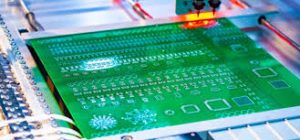- What Defines Quality in PCB Manufacturing?
- When it comes to PCB manufacturing, the notion of quality extends beyond simple aesthetics – it includes several critical parameters that evaluate the functionality, reliability, and durability. A superior-quality printed circuit board forms the basis of nearly every electronic device, so it is crucial for engineers as well as manufacturers to understand these quality metrics.
- Materials Matter: The Foundation of PCB Quality
The choice of base materials is the first critical factor that determines the quality of PCBs. High-quality boards are usually constructed using high-performance FR-4, polyimide, or PTFE materials. The reason for these choices is that such materials have superior dielectric properties, improved thermal stability, and mechanical strength. For example, the glass transition temperature in standard FR-4 is approximately 140°C, while high-quality versions can have Tg of up to 180°C, meaning they are better at resisting heat during extreme operations.
- Precision in Patterning: The Degree of Component Integration
Another critical feature of PCB quality is the precision with which the circuits are patterned into the substrate. Sophisticated PCB technology utilizes an etching process that is highly precise and creates minimal undercutting and line width variance. This level of defectiveness makes circuits a lot denser and allows for the integration of micro-scale components, such as blind/buried vias and wire-bonding pads. High-quality PCB manufacturers may have line width control measurements within ±10 microns that are essential for high-density interconnect boards.

- Layer Alignment: Necessary for Multi-layer PCBs
Layer alignment is another essential feature, particularly for multi-layered PCBs. If each layer fails to be precisely aligned, products could suffer from short circuits or a discontinuity of current. High quality manufacturing utilizes optical inspection systems and automatic alignment methods to ensure that layers are misaligned by only a few microns.
1. * Solderability and Surface Finish: Critical for Reliable Connections
The surface finish of a PCB is a vital component affecting both its solderability and longevity. While alternatives such ENIG provide excellent surface planarity and oxidation resistance, they require additional processes for effective soldering of components. To produce a high-quality PCB, the surface finish should guarantee a solder spread of 95% or more. That condition is particularly true for fine-pitch components whose requirements often exceed the manufacturing capacities of inferior alternatives.
2. * Drilling Accuracy: A Pillar of Component Compatibility
Many PCBs employ through-hole vias to connect multiple layers, and drilling precision is necessary to guarantee their successful integration. The hole diameters of the ViAs must be held precise within an acceptable margin of ±75 microns. Without such accuracy, the numbers of the plated-through holes that connect multiple layers on a PCB would be compromised, leading to potential defects in durability and usability related to the plan of the electrical and mechanical bonding of thin layers.
3. * Testing and Inspection: The Final Validators of Quality
Once the components are soldered, each PCB should be submitted to various tests to check its overall quality. The most common examination techniques are Automated Optical Inspection, X-ray inspection, and in-circuit testing. These practices seek to identify short circuits, open circuits, insufficient soldering, and many other forms of defects introduced during the production process. While the specifics of each test may provide varying quality results, the combined statistical data often indicates a defect rate of less than 0.1%.